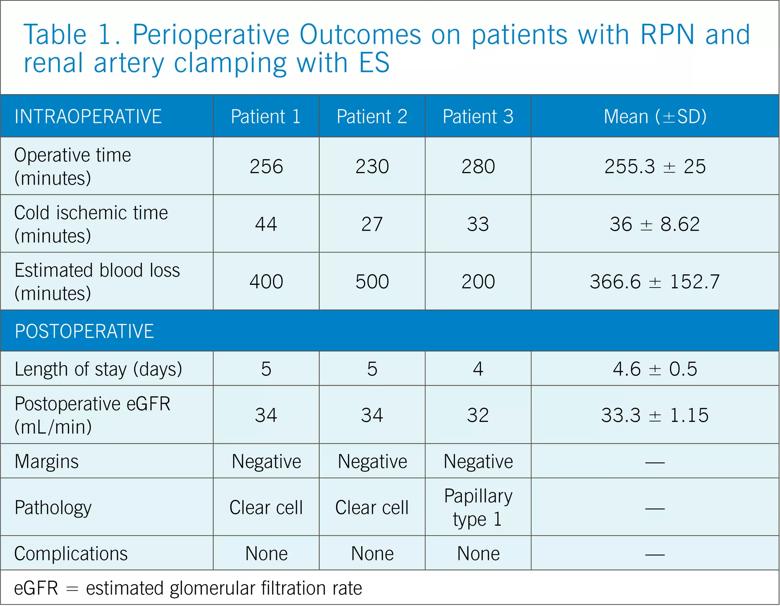Advertisement
Don’t let your bulldog crush a stented renal artery
By Juan D. Garisto, MD, and Jihad Kaouk, MD
Advertisement
Cleveland Clinic is a non-profit academic medical center. Advertising on our site helps support our mission. We do not endorse non-Cleveland Clinic products or services. Policy
When partial nephrectomy is necessary in patients with previously placed endostents for narrowing of renal arteries, it is time to “call of the dogs.” These renal stents are simply not strong enough to withstand bulldog clamps. Placing bulldogs on the artery can crush and occlude the renal artery, shutting it down permanently and damaging the kidney.
Instead, we dissect the artery more distally, at each segmental branch and use multiple bulldog clamps, successfully preserving the renal artery and kidney function.
This video demonstrates our surgical technique for robotic partial nephrectomy (RPN) with particular focus on vascular clamping in a patient with a complex renal mass and endovascular stent (ES) in the renal artery.
A 73-year-old man with a 10 cm left renal and associated fenestrated endograft due to endovascular aorta repair presented to our practice. After reviewing preoperative imaging, we elected to use a robot-assisted partial nephrectomy.
Major steps included hilar control, intracorporeal renal hypothermia using ice slush, distal clamping of the renal artery, excision of renal mass, and intraoperative ultrasound post-excision to confirm blood flow.
We reviewed records of three patients who underwent RPN at our institution with selective clamping of renal arteries due to previous placement of ES to better understand outcomes. Median age was 69.6 years, BMI was 31.3, and mean eGFR was 36.6 mL/min. No cases were converted to open procedures. Perioperative outcomes of patients who underwent nephron-sparing surgery (NSS) are described in Table 1.
Advertisement
Based on our review and experience, we found the following steps to be key drivers in optimizing outcomes during NSS in patients with stented renal arteries:
Partial nephrectomy in patients with renal artery stents requires distal dissection of the renal artery beyond the stent. Our technique provides valuable and reproducible surgical hints and tips that will help optimize outcomes in NSS in patients with endovascular graft stents.

Advertisement
Advertisement

Historic collaboration connects two Cleveland Clinic locations, enables real-time sharing of metrics and surgical progress

Retrospective study evaluates clinical upstaging during neoadjuvant treatment

Retrospective study finds acceptable cancer control among most histologic subtypes with intravesical therapy

Revolutionizing pediatric urology with a new, less invasive approach

What updated techniques, counseling and a changing workforce could mean

Applications, outcomes and untapped potential

Retrospective study shows SGLT-2 inhibitors may lead to worse urologic outcomes

Early, individualized diagnosis and comprehensive management key to preserving fertility